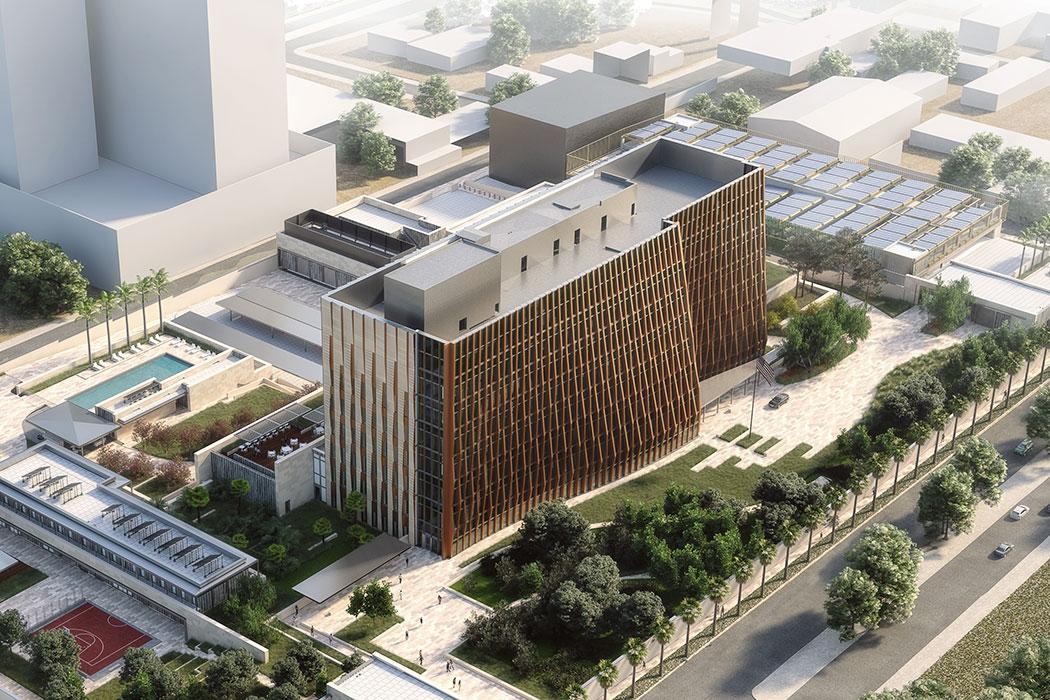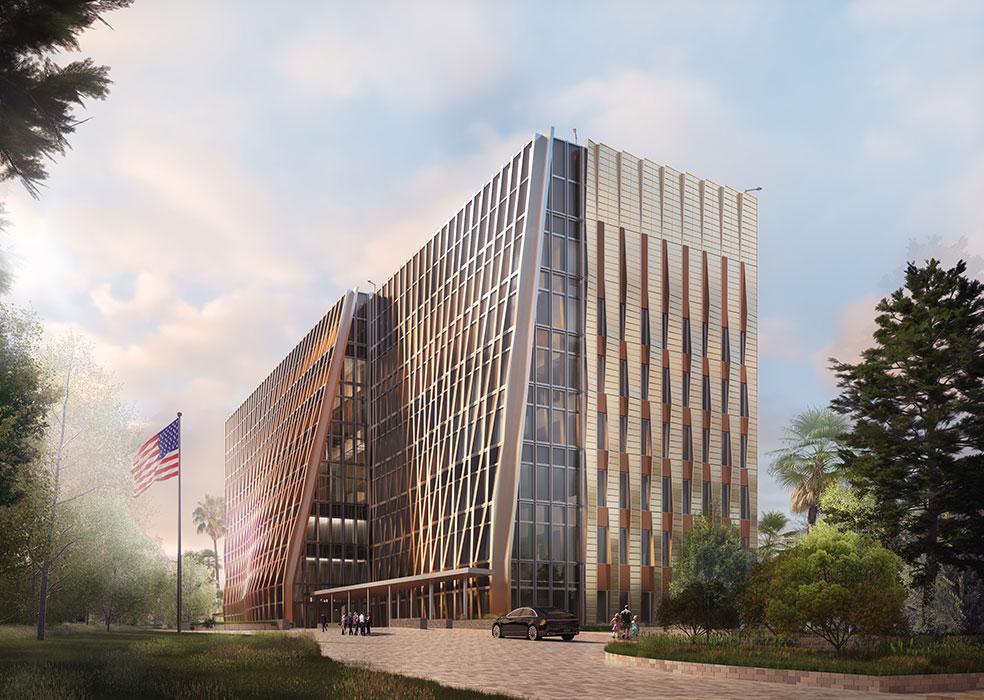United States Embassy Compound - Tegucigalpa
Spanning nine acres, the new U.S. Embassy Tegucigalpa Compound reflects the local mountainous landscape.
Overview
Spanning nine acres, the new U.S. Embassy Tegucigalpa Compound reflects the local mountainous landscape. Thornton Tomasetti provided integrated structural, façade, blast and physical security engineering services.
Our team provided integrated services for the compound, which includes an eight-story chancery, a two-story marine security guard residence, three access control buildings, a utility building, a warehouse, a recreation center and a partially buried parking garage, all designed to withstand significant seismic forces.
The chancery is composed of cast-in-place, reinforced concrete frames and shear walls that are designed for blast resistance and progressive collapse mitigation. Several floor plates on the north side of the building are recessed from the façade, creating a sloped profile and unique cantilevered slab edges. Sloped columns were added to shorten the length of the cantilevered slabs as the building rises while accommodating proposed floor plans. The top four levels of the north façade are hung from a cantilever edge at the roof level, imposing large demands on the roof structure. The open space on the north side of the building did not allow for shear walls due to a glass façade, offsetting the core towards the south and generating torsional irregularities. Our structural team overcame this challenge through rigorous analysis and iterative adjustment of wall thicknesses.
The north and south façades, and parts of the east and west, consist of both glazing and opaque systems. The north façade is composed of a custom buildup steel grid infilled with aluminum, thermally broken, punched windows and cladded with a custom metal plate rainscreen system. The south façade utilizes a similar system within cast-in-place concrete walls, clad with a custom glazed terra cotta rainscreen system. The panels are installed on a unitized, pre-fabricated steel frame to streamline the installation.
By integrating multiple disciplines, we were able to advance an efficient and highly collaborative process with the U.S. Department of State Bureau of Overseas Buildings Operations team and meet stringent seismic demands, detailing specifications and security standards.







